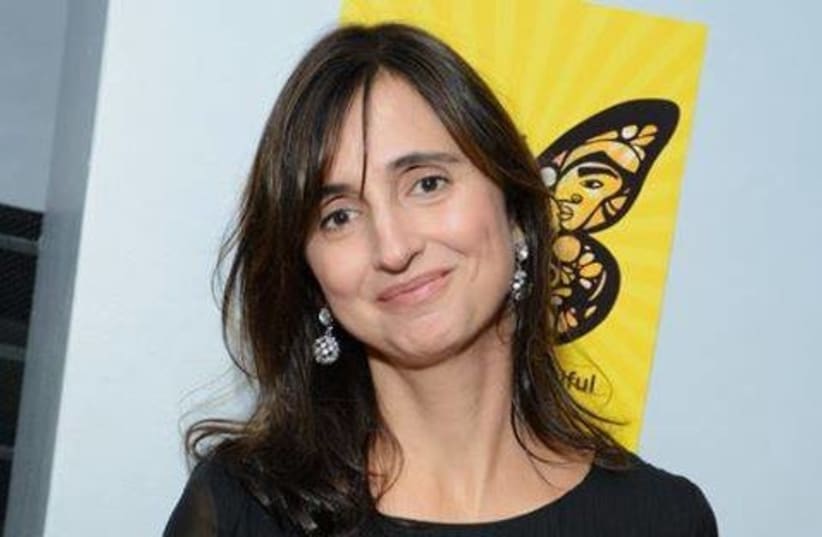The Iranian-American Jewish poet, journalist and author Roya Hakakian has penned a work that surely will join the pantheon of great immigration stories.
A Beginner’s Guide to America: For the Immigrant and the Curious is a genuine treat – witty, comic, brimming with profound insights into America, and a literary gem to boot.
Hakakian, who was born in Tehran in 1966 and fled the Islamic Republic in 1984 to eventually settle in the US, has a razor-sharp eye for the idiosyncrasies of American life and culture.
As she notes in the introduction, her early socialization was shaped by the persecution she experienced due to her religion, gender and beliefs. She is also a product of war and revolution in the theocratic state she left behind.
Yet she quickly observes that “America cares little about what you have done, only what you will do while you are here.” And that is a key takeaway regarding much of American life.
Or, as former New York mayor Ed Koch bluntly put it, “How’m I doing?”
As a journalist reporting on Iranian Jews and Iran, Hakakian’s juxtaposition of the post-1979 clerical state with the US offers no shortage of stark contrasts.
“If you come from a land where women must don the veil, you will be stunned to see the veil-less women walk about,” she writes.
She references the way in which autocracies such as the Islamic Republic seek to safeguard your “virtue” by use of intelligence agents. In contrast, the liberties entrenched in the US guarantee one the right to be veil-less or to sport a veil, a coexistence intrinsic to the democratic way of life.
Hakakian cites the widespread use of seat belts and of helmets for cyclists in the US as a reminder of “where human life is not as cheap as you once knew.”
There are no “morality police,” she writes of parks in America, in sharp contrast to the Guidance Patrol squads in Iran that pursue women not properly wearing hijabs. Morality police also exist in Saudi Arabia and Malaysia and other majority-Muslim nations.
The book is not just about immigrants from Iran but is a kind of practical guide for immigrants from all nations.
It is exceedingly difficult to cherry-pick great anecdotes from Hakakian’s book, because it overflows with them. But let us cite the use of the question “Where are you from?” that is oft posed in America. Hakakian delves into this phrase with a razor-sharp scalpel and writes: “To avoid conjuring menacing ayatollahs to mind, you might not wish to call yourself Iranian. It would be better to associate yourself with lush rugs and purring cats by calling yourself Persian instead.”
In her section on résumés, “Your Life on a Page,” Hakakian notes that the street smarts and survival skills that helped you flee your autocratic homeland, “All the feats you performed to escape and outfox every danger, which seemed like major triumphs at the time, warrant no mention now.”
Reading the section on English as a second language courses, I had the feeling of being transported into an American version of George Bernard Shaw’s Pygmalion and the troubles Eliza Doolittle had with pronunciation. Who hasn’t studied a foreign language and had problems with articulation?
The challenges faced by speakers of Slavic languages, Spanish, Arabic, and Farsi are delightfully presented in the book.
The dreams of immigrants are a recurring theme. Many migrants, especially of the younger generation, are not in the business of asking what a man or a woman is, but rather what can a man or woman become in the US. Hakakian also captures the goals of immigrants in the more challenged age group of those over 40.
With her example of Vladimir the physician, who was medical chief at a large hospital in Russia and will now have to settle for manual labor, she explores the rough contours of immigration.
Her vivid illustrations of the dream world of new immigrants to America recall the famous quote from T.E. Lawrence of Lawrence of Arabia fame: “All men dream: but not equally. Those who dream by night in the dusty recesses of their minds wake up in the day to find it was vanity, but the dreamers of the day are dangerous men, for they may act their dreams with open eyes, to make it possible.”
In “On Public Transportation, Getting Lost,” Hakakian displays an uncanny ability to draw hilarious parallels between the totalitarian Iranian regime and the US. “No leader’s or ayatollah’s name follows the word ‘Grand’ here.”
She adds that it is “Better to breathe on a mediocre and unambitious Elm than to walk under the banner of a Valiasr, the Shi’ite Messiah.”
The New York Times reported in 2009, amid protests against the fraudulent election victory of former Iranian president Mahmoud Ahmadinejad, that “at one point thousands of protesters chanting ‘death to the dictator’ as they walked down Valiasr Street, the broad avenue that runs across much of Tehran, collided with an equally large crowd of pro-government marchers chanting slogans against Israel, the United States and Britain.”
Hakakian neatly captures the contrast between the innocuous names of American streets and Iranian avenues with theologically animated names.
At the same time, she notes that the existence of a Frederick Douglass Highway signifies “that America’s mistakes are not few, but that she has the ability to correct herself and change course.” Her book is animated by the spirit of the great American social and political philosopher Sidney Hook’s comment that “in contrast to totalitarianism, democracy can face and live with the truth about itself.”
A Beginner’s Guide to America is, in many ways, a celebration of the country, a tribute, but without ignoring its defects and mistakes.
Hakakian dissects America’s culture of consumption in a free-spirited but not pejorative manner, noting, for example, the vast diversity and abundance of cereals newcomers are presented with upon arrival.
“Tyrannies urge their citizens to loosen their ties to the material world. They want them ready to sacrifice themselves for a higher cause, become martyrs. Some even promise paradise with all manner of heavenly perks,” she writes.
Her sections on lovers’ discourse in the US and how attraction unfolds could be a book in itself.
“Americans have created an industry to speak about the unspeakable,” she writes, laying out a kind of compendium of the “Seven Deadly Sins, Immigrant Edition.”
Hakakian’s use of dialogue within dialogue further engages the reader in the struggles of new immigrants. In “Serendipity for Two Lost Immigrants,” she captures the trials and tribulations of two newly arrived Jewish Iranians in sprawling New York City. In another dialogue section, she presents “A Car Ride with Two Dissident Parents and Their Very Young Children,” where she explores the Chinese Communist Party.
Her book is peppered with questions about things that Americans take for granted: “How do free people live?” and “What is a night without fear?”
The highly repressive states that immigrants fled are places where “You only tiptoed around the edges of life, as if it were a fearsome beast not to be awakened,” notes Hakakian.
One of the book’s strengths is that Hakakian manages to overcome the common wisdom that good questions are better than good answers, by excelling in both spheres.
America’s flawed and at times deeply deceptive diplomacy regarding totalitarian regimes surfaces in the book. The author’s section on the longevity of dictatorships could apply to China’s Communist regime, North Korea and the Islamic Republic of Iran, to name just three highly dangerous nations.
“What you do not know is that a dictatorship has a half-life. When it is new, it is thought of as an evil that the world must rid itself of. But if it is not toppled in time and goes on to endure, the next generation will likely see it as just another imperfect regime,” writes Hakakian.
The book is aptly subtitled “For the Immigrant and the Curious.” One can only hope it will be translated into the languages of immigrants to America, ranging from Arabic, Spanish and Russian to Persian.
With her spectacular new work, Hakakian has jumped into the past, lived in the present, and jumped into the future.
The writer is a fellow for the Foundation for Defense of Democracies.
A Beginner’s Guide to AmericaBy Roya HakakianKnopf218 pages; $27

